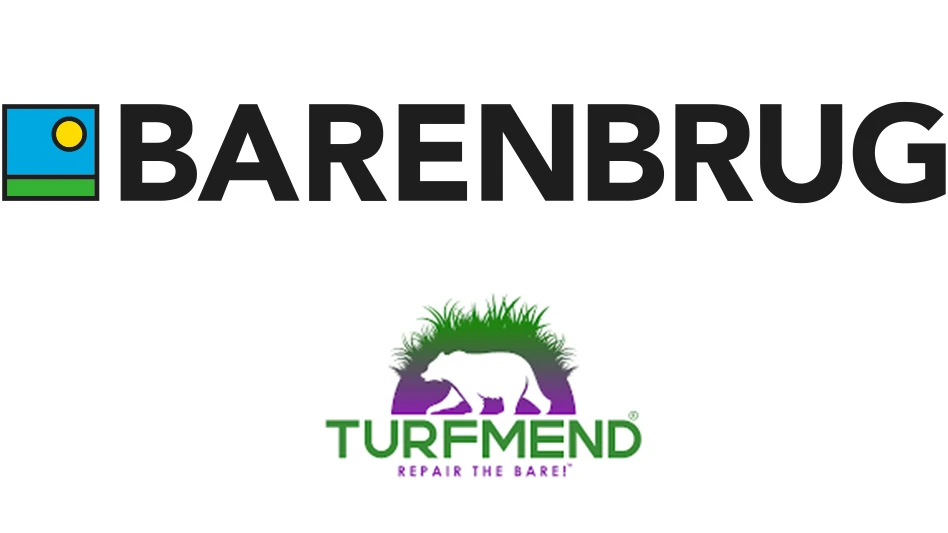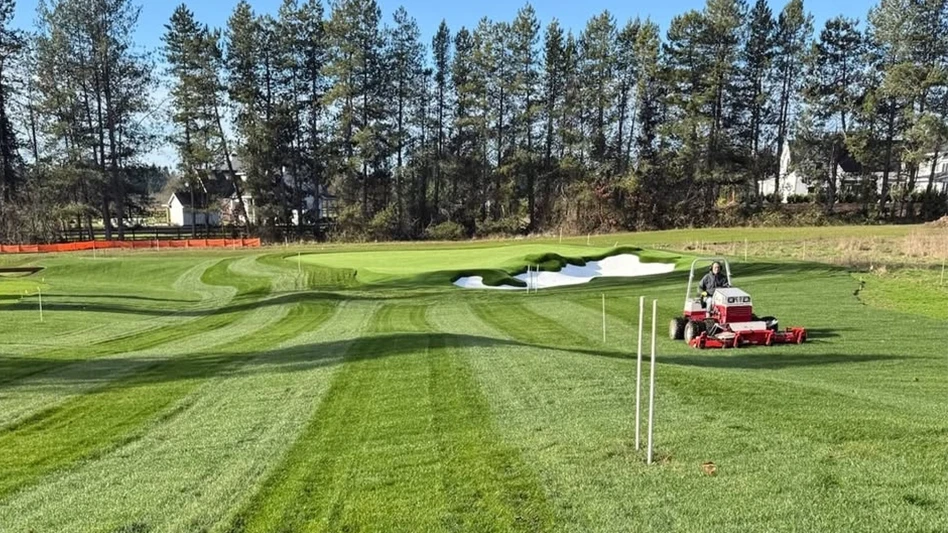|
During the past 30 years the successful management of golf course putting greens in the U.S. has generally been associated with green speeds, which can be traced back to the introduction of the Stimpmeter in the late 1970s. The USGA’s goal was to give superintendents a tool to assist them in creating consistent putting conditions across the entire golf course. With the advent of the Stimpmeter, many cultural and chemical practices have been implemented through the years by superintendents in a quest for the “perfect” firm, fast greens. These include lowering mowing heights or increasing mowing frequency, reducing irrigation and fertilizer amounts to limit plant vigor, applying plant growth regulators to limit vertical growth or employing devices like rollers. Some or all of these practices may be implemented at any one time to optimize putting green speed, which is measured in terms of ball roll distance (BRD). With the advances in mowing equipment, some golf course superintendents are now mowing greens as low as 0.075 inches in an effort to satisfy golfers’ continuing desire for faster speeds. These low mowing heights are extremely dangerous to the overall health of the turfgrass plant. During the summer months, greens maintained at these low heights of cut often lose density, lack vigor, recover slowly from wear, and exhibit poor resistance to pest infestations. Dr. Thom Nikolai (Michigan State University) reported mowing heights on creeping bentgrass greens could be raised from 0.125 inches to 0.156 inches during the summer months, if combined with lightweight rolling, to maintain green speeds and an overall healthier turfgrass stand. Lightweight rolling is conducted to smooth and improve turf canopy uniformity on putting greens as well as to increase BRD. Overwhelmingly, green speed research to date has focused on creeping bentgrass. The objective of this study was to investigate the effects of various mowing and rolling regimes on annual bluegrass (Poa annua) green speeds.
All mowing was performed using a walk-behind greens mower (Jacobsen PGM 22) set to a cutting height of 0.150 inches. Rolling treatments were performed with a Smithco gas roller (845 lbs.) or with a Smithco electric roller (1,140 lbs.). The plots were mowed at 8 a.m., and immediately following mowing operations, rolling was applied as a single pass across plots. In 2009, plots were fertilized (0.15 lbs. N/1000 ft2) and topdressed weekly. In 2010, plots were fertilized every 10-14 days and topdressed biweekly. Putting green speed was evaluated daily by measuring ball roll distance with a Stimpmeter at 9 a.m. and at 2 p.m.
Since no differences were observed between the two rollers, mowing and rolling treatments were averaged across all roller treatments. The greatest increases in BRD were observed with mowing and rolling daily (+17.5 inches), followed by rolling daily and mowing four days each week (+12 inches). Mowing daily and rolling three days a week, along with alternating mowing and rolling, also resulted in positive BRD. The afternoon measurements were comparable to the morning, with an average decrease of two inches. Dr. Doug Karcher (University of Arkansas) and his research team determined golfers cannot distinguish between green speeds of 6-inch differences or less. Based on these findings, there was no distinguishable difference in green speeds from morning to afternoon. These data would indicate that superintendents can maintain desirable annual bluegrass green speeds throughout the day, following an appropriate mowing and rolling regime in the morning. Based on the significant annual bluegrass BRD increases obtained with various mowing and rolling regimes, we compared the differences with those previously reported on creeping bentgrass. The data, while not identical, mirror the effects of the various mowing and rolling treatments for creeping bentgrass and annual bluegrass.
Rob Golembiewski, PH.D, assistant professor, horticulture; Tod Blankenship, CGCS, M.S. candidate, horticulture; and Brian McDonald, research technician, horticulture, at Oregon State University. |

Explore the March 2011 Issue
Check out more from this issue and find your next story to read.
Latest from Golf Course Industry
- Landscapes Golf Management promotes six
- Introducing our March 2025 issue
- A YouTube channel for equipment managers
- Syngenta launches GreenCast Connect
- Nufarm receives CEPA registration for Velocity PM
- Wonderful Women of Golf 45: Alexa Moncada
- Envu establishes partnerships with BioConsortia
- Indian Wells Golf Resort announces renovations on Players Course






